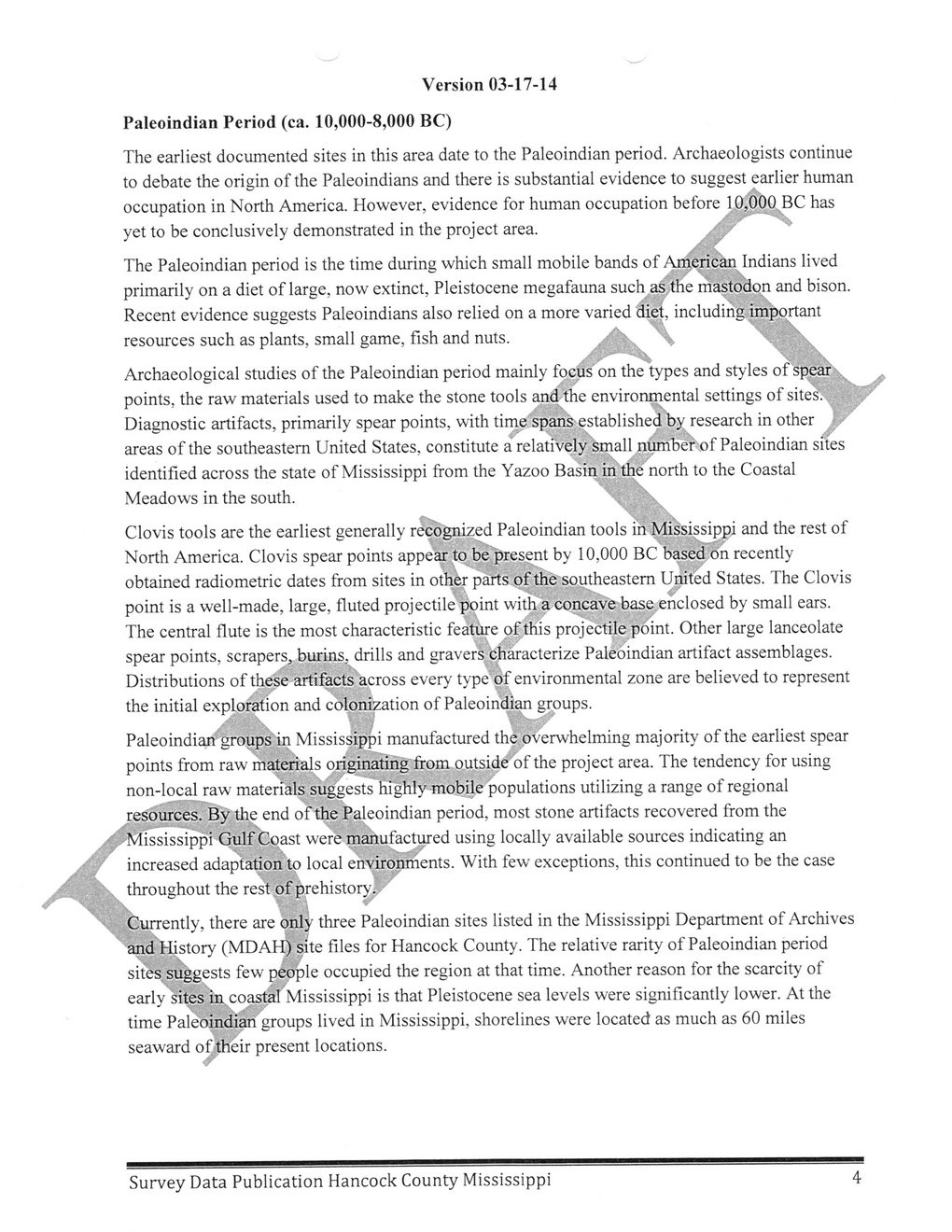This text was obtained via automated optical character recognition.
It has not been edited and may therefore contain several errors.
Version 03-17-14 Paleoindian Period (ca. 10,000-8,000 BC) The earliest documented sites in this area date to the Paleoindian period. Archaeologists continue to debate the origin of the Paleoindians and there is substantial evidence to suggest earlier human occupation in North America. However, evidence for human occupation before 10,000 BC has yet to be conclusively demonstrated in the project area. The Paleoindian period is the time during which small mobile bands of iVwican Indians lived primarily on a diet of large, now extinct, Pleistocene megafauna such as, the mastodon and bison. Recent evidence suggests Paleoindians also relied on a more varied diet, including important resources such as plants, small game, fish and nuts. ' • \ Archaeological studies of the Paleoindian period mainly focus' on the types and styles of spear\ points, the raw materials used to make the stone tools and the environmental settings of sites. Diagnostic artifacts, primarily spear points, with time spans established by research in other areas of the southeastern United States, constitute a relatively small number of Paleoindian sites identified across the state of Mississippi from the Yazoo Basin in the north to the Coastal Meadows in the south. Clovis tools are the earliest generally recognized Paleoindian tools in Mississippi and the rest of North America. Clovis spear points appear to be present by 10,000 BC based on recently obtained radiometric dates from sites in other parts of the southeastern United States. The Clovis point is a well-made, large, fluted projectile point with a concave base enclosed by small ears. The central flute is the most characteristic feature of this projectile point. Other large lanceolate spear points, scrapers, burins, drills and gravers characterize Paleoindian artifact assemblages. Distributions of these artifacts across every type of environmental zone are believed to represent the initial exploration and colonization of Paleoindian groups. Paleoindian groups in Mississippi manufactured the overwhelming majority of the earliest spear points from raw materials originating from outside of the project area. The tendency for using non-local raw materials suggests highly mobile populations utilizing a range of regional resources. By the end of the Paleoindian period, most stone artifacts recovered from the ' Mississippi Gulf Coast were manufactured using locally available sources indicating an increased adaptation to local environments. With few exceptions, this continued to be the case throughout the rest of prehistory. Currently, there are only three Paleoindian sites listed in the Mississippi Department of Archives and History (MDAH) site files for Hancock County. The relative rarity of Paleoindian period sites suggests few people occupied the region at that time. Another reason for the scarcity of early sites in coastal Mississippi is that Pleistocene sea levels were significantly lower. At the time Paleoindian groups lived in Mississippi, shorelines were located as much as 60 miles seaward of their present locations. Survey Data Publication Hancock County Mississippi 4

Hancock County History and Archeology Survey-Publication-Data-2014-(06)